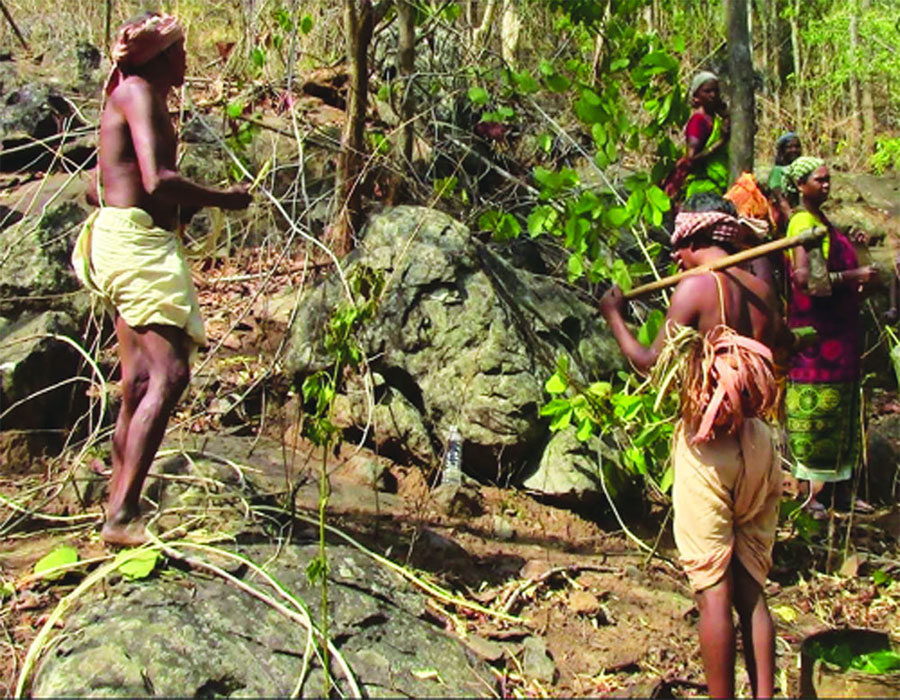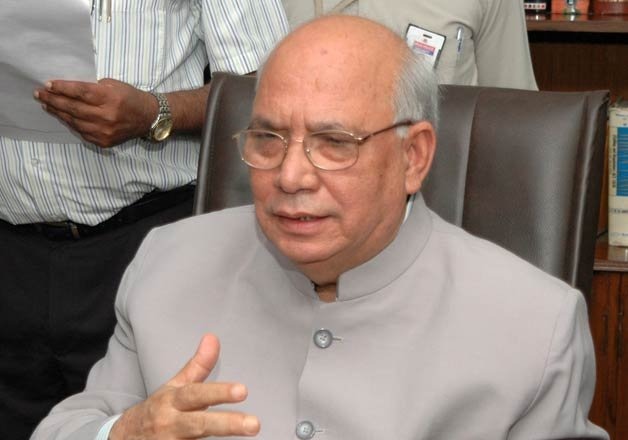The law’s implementation suffers due to the lackadaisical and target-oriented approach of the Tribal Affairs Ministry, which is just content with settling claims
The conservation of forests in India has been a bone of contention for more than a century now, ever since the creation of a Forest Department in 1864. The British enacted the Indian Forest Act in 1865 and amended it in 1878 with detail prescriptions on how to control and scientifically work forests. The 1878 Act was again modified in 1927 and today it forms the basis of management of forests in the country along with the Wildlife Protection Act, 1972 and Forest Conservation Act, 1980.
The struggle for access and control of forest resources by tribals intensified after the forests of princely States were declared as reserved and protected areas. In 1989, the Government set up a dispute settlement mechanism at the district level with a committee consisting of a Sub-Divisional Magistrate, Sub-Divisional Forest Officers and the Sub-Divisional Tribal Welfare Officer. But this committee remained either non-functional or did not do its job. The problem kept festering, with rival political interests taking centrestage after the Supreme Court’s order in 2003 on eviction of all encroachments on forest lands. After the General Election of 2004, the United Progressive Alliance enacted the Scheduled Tribes and the Other Forest Dwellers (Recognition of Forest Rights) Act, 2006. It recognised that forest rights on the ancestral lands of the tribals and their habitat were not adequately provided, resulting in historical injustice to the Scheduled Tribes and other traditional forest dwellers, who are integral to the very survival of the ecosystem.
For the last 14 years, the process of vesting forest rights is under way under the provisions of the Forest Act. As per the Ministry of Tribal Affairs, as on June 30, a total of 42,52,124 claims had been filed. Of this 41, 03,001 were individual claims and 1,49,123 were community ones. A total of 19,09,249 individual claims comprising over 16.69 lakh hectares (ha) of forests were settled and vested with the people. And 76,383 community claims over 35.22 lakh ha of forests were vested with the beneficiaries. Thus forest rights of tribal people and traditional forest dwellers on around 52 lakh ha of forests stand settled.
Now the question is, what is happening to these people? In the tribal belt of Madhya Pradesh, in the districts of Jabalpur, Seoni, Mandla, Umeria, Balaghat and Dindori, I met representatives of local NGOs, Jai Bharati Siksha Kendra, Kalyan Ashram and Bharat Vikas Parishad and a large number of tribal people, and discussed the implementation of the Act. On the positive side, in well-stocked forests, where mahua, chirongi and so on are available, the people have raised their income. At one place in Dabra Khurd in Jabalpur district, the management of 42 forest resources out of 75 has been transferred to 12 village communities. But these 3,500 ha of forests, from the point of view of the management, have become a no man’s land as neither is the forest department doing anything, nor do the communities have the wherewithal to manage them because of lack of funds and capacity. The proposal for the creation of a Van Dhan Centre by communities is being tossed between the Collector’s Office and the Divisional Forest Officer. Another proposal of the Dabra village community for preparation of the micro plan, as per the provision of the Act, has not been forwarded by the Tribal Welfare Department of Madhya Pradesh to the Centre, for funding under the tribal sub-plan, in the last two-and-a-half years.
Grassroot workers put this down to corruption in the Tribal Welfare Department where a huge amount of funds remains unutilised. Hence, out of frustration, social workers are leaving these communities in the lurch.
The villagers of Dabra Khurd are asking for tendu patta auction rights because in the existing process, the Joint Forest Management (JFM) committees get a part of the sale money and not the Community Rights Committees. The viability of continuing JFM committees in these areas is being questioned and there is talk of replacing it with a better, people-centric strategy.
There is confusion in these villages regarding the management of forests as the local forest officers feel that they are not allowed to operate in these areas and the people also do not approach them due to lack of mutual trust. While the local Chief Conservator of Forests has agreed to hold a meeting with the people to develop a model for the management of Non-Timber Forest Products, politics is making the people root for more individual rights. They are not focussing on managing community rights. It is ironical that 86 per cent of the growers in India are marginal farmers with less than two ha of land. The basic aim of the enactment of this Act has, therefore, succeeded only partially.
The Act’s implementation suffers due to the lackadaisical and target-oriented approach of the Tribal Affairs Ministry. It is just content with settling claims. The objective of this Act is to help both, the people and the ecosystem they are a part of. The Union Government must consider making the Forest Department responsible for preparing a micro plan and building the capacity of the people for managing the forests.
One major decision warranted is to continue JFM in other forest areas with second-generation reforms but in areas where the forest right Act is being implemented, it should be replaced with community forest management, with the communities having the freedom to manage the resources with the technical support of the Forest Department.
Grassroot level NGOs should be made stakeholders for more transparency and to support the communities in capacity-building. The basic flaws in the Act’s implementation must be rectified by making the Forest Department the nodal agency for the execution of management and development of resources jointly with communities. This is so that a single point delivery system with accountability exists.
There is a need for policy intervention by the Centre so that 52 lakh ha of forests produce sufficient resources for the people while remaining ecologically viable.
(The writer is a former civil servant)








 OpinionExpress.In
OpinionExpress.In















Comments (0)